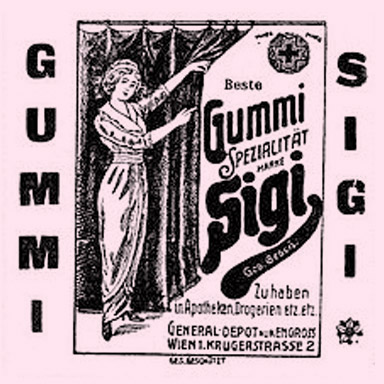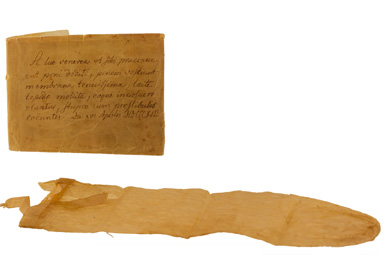


Condoms, or: how it came that we put on rubber
On a closer look, the idea of the condom as a glorious protector from sexually transmitted infections and unwanted pregnancy is really groundbreaking. But at second glance as revolutionary as simple, we must admit. Because by putting on this really thin product – usually between 0.06 and 0.08 mm – like a second skin on the penis, a really high level of security is achieved. But how was it done in the past and where do the origins of the condom lie?
Non-vegan prototypes in the history of condoms
The idea of rolling on a condom onto the erect penis to avoid pregnancy or infection with STDs is very old. Though in earlier times the predecessors of the recent condoms have often consisted of woven fabrics or even parts of animals like lamb intestines. Not really a very stimulating fact indeed, not exclusively to vegans. Different sources mention condom-like prequels in ancient Greece or Egypt, others name very famous users of the sheath: the Venetian writer and ladies’ men Casanova of the 18th century. He is said to have employed people for the individual manufacturing of condoms to seduce numerous women. Unfortunately, he did not only use these one-time-only. The result can easily be imagined and may bring modern people to shiver once more.
From now on rubber comes into play
By the invention of rubber vulcanization – therefore the material which is derived from the rubber tree Hevea brasiliensis – the condom gained fresh impetus. Charles Goodyear had discovered in 1839 that it was possible to produce rubber from latex which was relatively cold- and heat-resistant as well as elastic. In 1855, the pioneer produced the first condom made of rubber, going into production in 1870. Until today many things have changed, amongst others the original thickness of 2 mm. In one of the different steps the teat-end which we now find at the top of a condom to collect the ejaculate has beein invented. Additionally, a professional manufacturing technique at the beginning of the 20th century. Julius Fromm developed the following groundbreaking technique: glass molds are dipped into a raw rubber solution. After the solidification of the material, the condoms can be easily stripped off and rolled up.
And what exactly is the key fact about vegan condoms? Casein, the disruptive element
Obviously, natural rubber’s main source, the milk of the rubber tree, is a vegan ingredient. But what makes many of today’s condoms not vegan at all is the utilization of casein, a protein which is found in cow’s milk. Substantially, it is deployed as a binding agent and therefore contributes to the fact that the finished product is not absolutely animal-free. When it comes to vegan certified condoms like those by FAIR SQUARED, it is different. These can be used for contraception without worries by vegans and other people caring about animal wellfare; spending a safe pleasure like those made with other additives. Of course, we do not involve animal testing in the manufacturing process of our condoms.
29. November 2018
